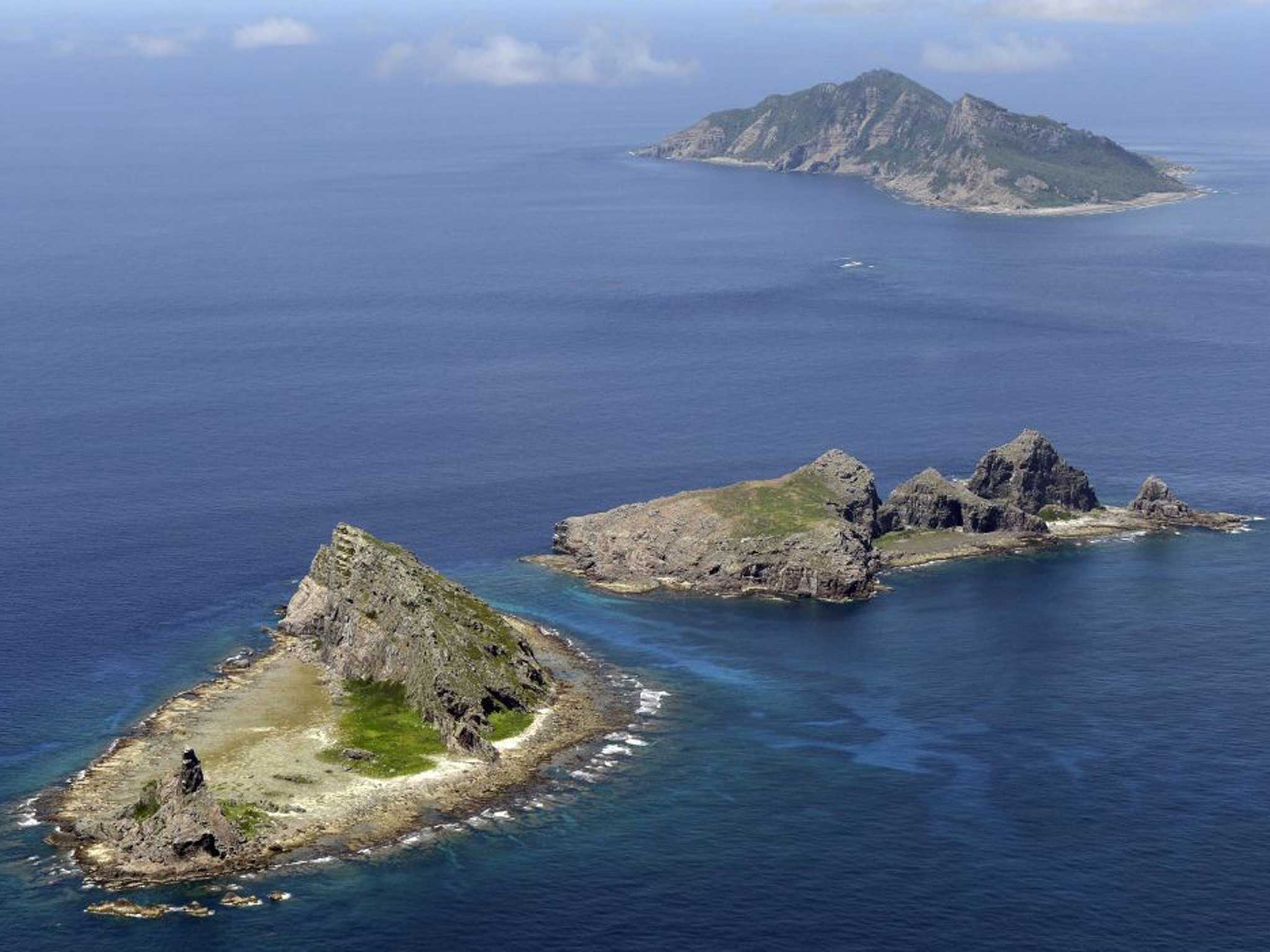Washington could be drawn into dispute as Japan and China square up over uninhabited islands
Conflict looms closer and Washington could be drawn in

Your support helps us to tell the story
From reproductive rights to climate change to Big Tech, The Independent is on the ground when the story is developing. Whether it's investigating the financials of Elon Musk's pro-Trump PAC or producing our latest documentary, 'The A Word', which shines a light on the American women fighting for reproductive rights, we know how important it is to parse out the facts from the messaging.
At such a critical moment in US history, we need reporters on the ground. Your donation allows us to keep sending journalists to speak to both sides of the story.
The Independent is trusted by Americans across the entire political spectrum. And unlike many other quality news outlets, we choose not to lock Americans out of our reporting and analysis with paywalls. We believe quality journalism should be available to everyone, paid for by those who can afford it.
Your support makes all the difference.China and Japan appeared last night to be a step closer to a military confrontation that could drag in the United States, after Beijing extended its air-defence zone over a group of islands that is also claimed by Tokyo.
Experts have voiced growing concern about tensions over the five uninhabited, barren islets and three rocks in the East China Sea known as the Senkakus in Japan or Diaoyus in China. South Korea and Taiwan also claim the islands.
The US has a mutual self-defence treaty with Japan, and last year it specifically confirmed this covered the islands. Washington said that an armed attack against Japan or the US would prompt each to “act to meet the common danger”.
In the latest sabre-rattling, the Chinese Defence Ministry yesterday issued a map of its East China Sea Air “defence identification zone”, which included the islands. Beijing warned it would take “defensive emergency measures” against any aircraft failing to identify itself in the islands’ airspace . It added it would “identify, monitor, control and react” to air threats.
“This is a necessary measure taken by China in exercising its self-defence right,” spokesman Yang Yujun was quoted as saying. “It is not directed against any specific country or target. It does not affect the freedom of over-flight in the related airspace.”
A Japanese Foreign Ministry spokesman said Japan had lodged a protest at China’s embassy in Tokyo and reiterated its position that the islands belong to Japan. “Setting up such airspace unilaterally escalates the situations,” the Foreign Ministry said.
Earlier this month, Japan’s military staged amphibious landings on some similarly uninhabited islands; 34,000 troops were involved. Patrol ships from both countries have been shadowing each other for months.
Dr John Swenson-Wright, senior consulting fellow at Chatham House and Cambridge University expert on modern Japanese politics and international relations, said yesterday that many experts on the region were becoming increasingly alarmed, particularly because China was building up forces that could “directly challenge Japan’s ability to maintain control over the islands”.
He estimated the chances of some kind of military conflict were “certainly no higher than 20 per cent”, but added: “I think we should be worried about it, because we have seen in the last two years a growing, steady increase in the willingness of China to challenge Japan’s claim ...China knows it would be outclassed [militarily] by the US and Japan, notwithstanding all the talk about the rise of China as a maritime power.
“Nobody wants a war – but that’s what they said in 1914.”
He said the US would be “very worried” about the situation and would probably try to build bridges.
In a report in April, the International Crisis Group think-tank warned that the islands had become a “highly explosive” issue in China, while moderates in Japan’s government had been sidelined. “Tokyo and Beijing urgently need to work towards establishing communication mechanisms and strengthening crisis mitigation in order to avoid a larger conflict,” the group commented.
Join our commenting forum
Join thought-provoking conversations, follow other Independent readers and see their replies
Comments